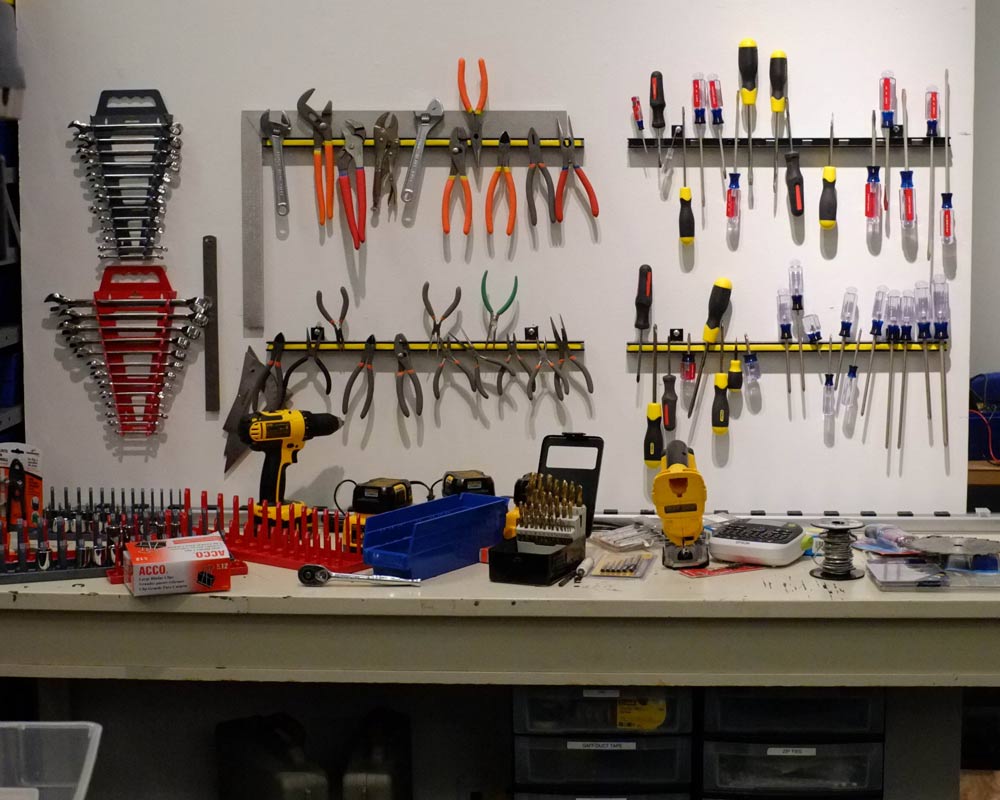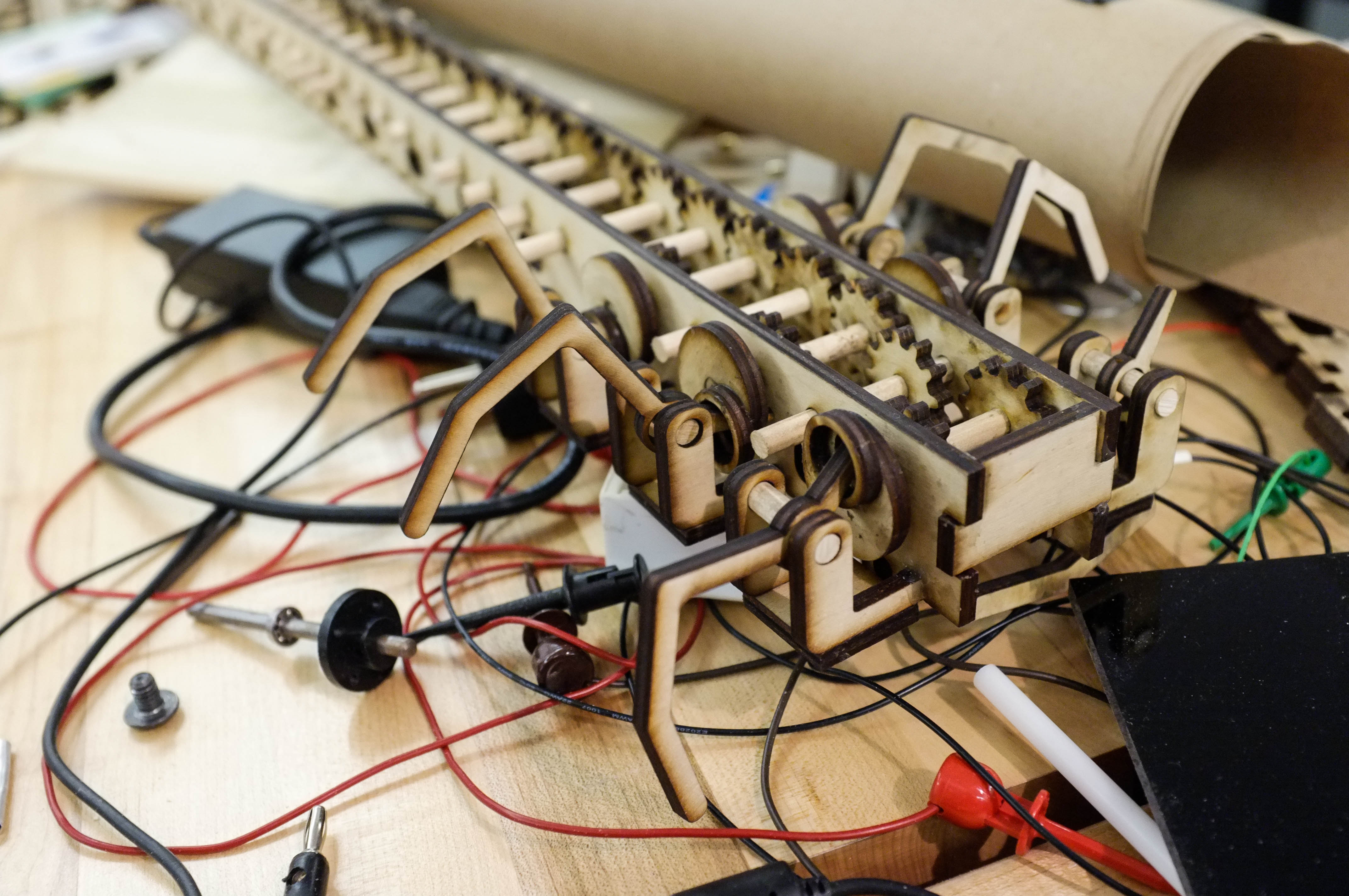It all begins with a feeling. For their first exercise at the beginning of the spring semester, students in “Exhibiting Science” (STS.035) — a class in MIT’s Program in Science, Technology, and Society — were instructed to write on a Post-it note their response to the question, “How does it feel to start a new semester at MIT?”
Each student then had to design a kinetic sculpture that used movement to embody their described feeling — whether of fear, anticipation, or excitement. Using everything from bamboo to rubber bands to foam, students built kinetic art that translated energy into motion — either through force of gravity or elasticity of a material — to convey something about the contents of the human heart.
“Exhibiting Science” is taught by MIT Museum Director John Durant and Museum Studio Co-Directors Seth Riskin and Allan Doyle. The theme this spring derives from the MIT Museum’s 5000 Moving Parts, an exhibition of kinetic sculptures, curated by Laura Knott, and featuring artists Anne Lilly, Rafael Lozano-Hemmer, John Powers, Takis, and Arthur Ganson, in collaboration with sound artist Christina Campanella.
Originating with early 20th-century sculptors such as Marcel Duchamp, Naum Gabo, and László Moholy-Nagy, kinetic art — where movement in a piece of art is perceivable to the viewer — deploys physical movement as its chief agent of expression. The MIT Museum has declared this the “year of kinetic art,” building upon a long-standing tradition of displaying this unique type of work — the poetic and wily machines of Ganson, for example, having been on permanent exhibition since 1995.
With the exhibition as inspiration, the students from the “Exhibiting Science” class have now created their own kinetic sculptures to display at the MIT Museum. Powers, Lilly, and Ganson mentored students as they embarked upon their mechanical creations, culminating in the rare opportunity for students to display their work for thousands of visitors. “They’re not just creating prototypes for an end-of-semester review,” Riskin says. “The students have to create pieces that are going to last and meaningfully engage Museum visitors. They have to be well done in terms of both art and engineering.”

The Museum Studio, housed off MIT’s bustling Infinite Corridor in the Compton Gallery — is the newest satellite of the MIT Museum. Here — among the worktops densely covered in wire, glue, circuit boards, soldering irons, X-Acto knives, PVC pipes, and other tools — is a space for creative experimentation. The Museum Studio “is a place where the art studio, the engineering lab and public forum combine to create a genuinely 21st-century learning environment,” Riskin says.
As a kind of research and development lab for interdisciplinary work, the studio serves as an incubator for student-led projects with exhibition potential. “It’s an ongoing exhibition of the creative process,” Riskin says, “a place for students to explore technologies as vehicles of expression and, equally, for visitors to see learning in action.”
For the first half of the semester, students learned “how to use the metaphor-making mind,” Riskin says. For instance, they learned how to “see gesture” in mechanical motion and how to embody ideas in form and movement. Next, it was a balancing act between the art and engineering processes — realizing their artistic concept, while engineering a functional piece.
But unlike a typical engineering class, “Exhibiting Science” is not all about solutions. “It’s not about getting the problem sets right. Through the projects students learn about themselves and find their voices to communicate about things that matter to them,” Riskin says.
At the beginning of the class, Doyle recounted a radio interview he’d recently heard with someone who had just taken a tightrope-walking class. At the end of the week, the person said, he wasn’t better at balancing but he was more comfortable being out of balance. And that was the same thing Doyle hoped to instill in his students: to accept uncertainty.
“I’ve just been finding that my mind has been opened up in ways that are very different from in a technical education,” says Dana Gretton, a sophomore who had been a fan of Ganson’s since glimpsing his work on YouTube in middle school.
“The idea of having a visual vocabulary is really powerful,” he adds, noting that art offers a language for what is difficult to express in words. His sculpture, which is about “the loss of self in grief,” features a kettle submerged in a tank of water that’s pouring liquid into a small teacup — an act that highlights the permeability of boundaries between inside and outside.
Yoonjeong Cha, a computer science and biology double major, was also looking for something outside the norm. “It’s so different from all of my other classes,” she says, adding, “We’re not doing something that’s already set by the instructors, it’s really about exploring. I thought that was really cool.” In her piece, two flaps of paper, affixed to wooden rods like sails, slowly rotate and periodically brush against each other. Viewers, she says, should feel viscerally the resistance of the paper, as it comes together slowly and then pushes apart.
The students’ sculptures, Riskin believes, represent their “lives, memories, experiences, and ambitions.” They are autobiographical, he says, adding, “The sculptures not only convey intended messages; they disclose something of their creators — the characters and imagination of MIT students.”
The kinetic sculptures from “Exhibiting Science,” as well as works by winners of the competition, Inventions: 2014 Student Showcase, will be on view from May 30 through December 31 in the Peterson Gallery A of the MIT Museum (Building N51, 265 Massachusetts Ave, Cambridge, MA) in an exhibition made possible by support from the Council for the Arts at MIT and the MIT Museum Friends and Patrons. Many of the works were created with the support and mentorship of the MIT Museum Studio. “Exhibiting Science” is sponsored by the Center for Art, Science & Technology (CAST) and the MIT Program in Science, Technology and Society.

